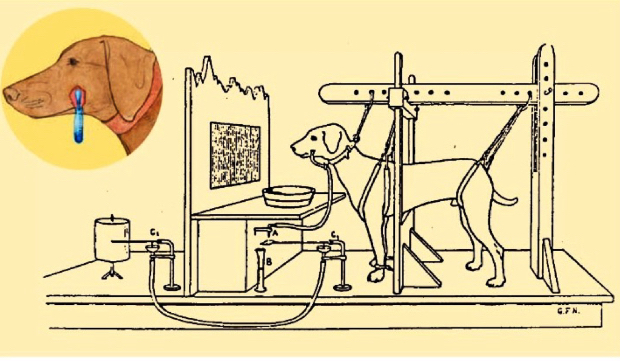Classical Conditioning
Key Learning Goals
Describe Pavlov's demonstration of classical conditioning and the key elements in this form of learning.
Clarify how classical conditioning can shape emotions, physiological responses, and attitudes.
Describe acquisition, extinction, and spontaneous recovery in classical conditioning.
Explain what happens in generalization, discrimination, and higher-order conditioning.
6.1 Classical Conditioning
Phobias are irrational fears, often acquired through classical conditioning.
Classical conditioning: A type of learning where a stimulus gains the ability to elicit a response typically evoked by another stimulus. (term 1st used in the 1940s)
First described by Ivan Pavlov in 1903, originally called Pavlovian conditioning.
Later termed 'classical' conditioning to differentiate it from other conditioning types.
6.1.1 Pavlov's Demonstration: 'Psychic Reflexes'

Pavlov, a Russian physiologist, studied digestion and discovered 'psychic reflexes'/conditioned reflex.
Observed dogs salivating before meat powder presentation, such as to a clicking sound.
Pavlov paired meat powder with a tone; after repeated pairings, the tone alone elicited salivation.
Demonstrated how stimulus-response associations are formed by environmental events.
Pavlov's theory aimed to explain emotion, temperament, neuroses, and language.
6.1.2 Terminology and Procedures
Stimulus: An object, behavior, or event that triggers a response.
Unconditioned association: Natural, unlearned connection between a stimulus and response.
Unconditioned stimulus (US): Stimulus that evokes an unconditioned response without prior conditioning.
Unconditioned response (UR): Unlearned reaction to an unconditioned stimulus that occurs without previous conditioning.
Conditioned association: Link established through conditioning.
Conditioned stimulus (CS): Previously neutral stimulus that, through conditioning, evokes a conditioned response.
Conditioned response (CR): Learned reaction to a conditioned stimulus due to previous conditioning.
In Pavlov's experiment:
US: Meat powder.
UR: Salivation to meat powder.
CS: Tone.
CR: Salivation to tone.
UR and CR may be similar but often differ in intensity or nature.
Example: Shock as US leads to scrambling as UR, but immobility as CR.
Classical conditioned responses are often reflexes and are elicited automatically.
Trial: Presentation of a stimulus or pair of stimuli in a classical conditioning experiment.
Associations can form rapidly, sometimes in just one pairing.
6.1.3 Classical Conditioning in Everyday Life
Classical conditioning regulates diverse everyday behaviors and emotional responses.
Conditioned fear and anxiety:
Phobias can be traced to classical conditioning experiences.
Example: Fear of water originating from a childhood scare, generalizing to all open water.
Anxiety responses can also result from classical conditioning.
Example: Cringing at the sound of a dentist's drill, where pain is the US and the drill's sound is the CS.
Other conditioned responses:
Immune system functioning can be influenced by conditioning where an unusual-tasting liquid (CS) is paired with an immunosuppressive drug (US), leading to immune suppression (CR) when the liquid is presented alone.
Reactions to drugs can be affected.
Environmental cues associated with drug use can become CSs, eliciting compensatory CRs (physiological reactions opposite to the drug's effects).
Heroin overdoses can occur when usual routines change, and compensatory CRs are absent, leading to a stronger drug impact.
Evaluative conditioning of attitudes:
Evaluative conditioning: Changes in the liking of a stimulus by pairing it with positive or negative stimuli.
Involves acquiring likes, dislikes, or preferences through classical conditioning.
Example: Pairing energy drinks with humorous cartoons increases liking for the drinks.
Pairing unhealthy snacks with images of adverse health effects promotes negative attitudes toward those snacks.
Used to change attitudes about brands, soft drinks, and exercise.
Liking of a stimulus can be increased or decreased by pairing it with positive or negative stimuli, respectively.
Attitudes changed through evaluative conditioning are stable and durable.
Evaluative conditioning may occur without awareness.
Advertising campaigns use evaluative conditioning, Nando's ads often use humor and political references.
6.1.4 Basic Processes in Classical Conditioning
Classical conditioning is complex, influenced by many factors.
Acquisition:
Initial stage of learning a new response tendency.
Stimulus contiguity: Stimuli occurring together in time and space.
Novel, larger, or more intense stimuli are more likely to become CSs due to their salience.
Extinction:
Gradual weakening and disappearance of a conditioned response tendency.
Caused by consistent presentation of the CS alone, without the US.
Example: Cringing at a dentist's drill sound diminishes without the experience of pain.
Spontaneous recovery:
Return of an extinguished conditioned association after a period of non-exposure to the CS.
Pavlov observed reappearance of salivation to a tone after extinction and a rest interval.
The recovered response is weaker and re-extinguishes quickly with repeated CS presentations.
Renewal effect:
If a response is extinguished in a different environment than where it was acquired, it reappears when the animal returns to the original environment.
Extinction suppresses, rather than erases, a learned association.
Spontaneous recovery and the renewal effect reveal that extinction doesn't lead to unlearning, and unwanted conditioned responses may reappear.
Stimulus generalization:
Responding to stimuli similar to the original CS.
Example: Cringing at a jeweler's drill as well as a dentist's drill.
Adaptive because organisms rarely encounter the exact same stimulus more than once.
Little Albert experiment (by John B. Watson and Rosalie Rayner: Conditioned fear of a white rat (paired with a startling loud sound) generalized to other white, furry objects.
The more similar new stimuli are to the original CS, the greater the likelihood of generalization.
Generalization gradients: Map out the strength of the generalization response in relation to the similarity between new stimuli and the original CS.
Stimulus discrimination:
Not responding to new stimuli that are similar to the original CS.
Adaptive for distinguishing between friend and enemy or edible and poisonous food.
Requires experience with both the original CS and similar stimuli.
Example: Dog responding only to the sound of your car, not other cars.
The less similar new stimuli are to the original CS, the greater the likelihood of discrimination.
Higher-order conditioning:
A conditioned stimulus functions as if it were an unconditioned stimulus.
Pairing a tone (established CS) with a red light, the red light can elicit salivation.
Demonstrates that classical conditioning doesn't depend on a genuine US.
Extends the reach of classical conditioning as new conditioned responses are built on already established ones.